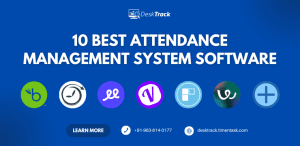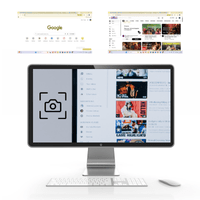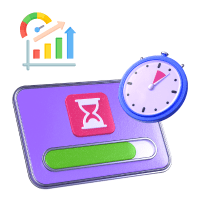Over the years and in the modern work environment, many organizations have adapted to the new normal i.e., remote work. However, they are also facing challenges in maintaining collaboration, communication, efficiency, and optimal performance.
With the emergence of work-from-home also known as remote or distributed work due to the many benefits it provides to the employees, the need to strategize remote work for more efficiency is also there. A good remote work strategy will ensure that you make the best solutions to get rid of all these issues and improve your employees’ efficiency, productivity, and performance.
What is a Remote Work Strategy?
Let’s get straight to the point, shall we? A remote work strategy is how you approach remote work and implement methods for improving workflow, communication, collaboration, efficiency, and performance. Regarding this, you need to include guidelines for who can work remotely and when or if the entire organization is implementing work-from-home.
Plus, you are also required to clearly define how you plan to boost efficiency. Overall, an effective strategy will ensure that existing remote workers get the much-needed support or let you easily expand remote work options to more staff members. That concludes the definition. However, why is it so important? What are the benefits?
Read Also – Top 10 Employee Management Software in 2024
The Benefits and Importance of Implementing Remote Work Strategy
Implementing the best remote work strategy has its benefits and importance. In this section, we will cover them in brief.
Benefits:
Talking about facts, did you know that implementing a remote work strategy can save you up to 40% on overhead costs? This is a huge amount if you weigh it against the challenges of establishing a remote work atmosphere. Other benefits include:
- Reductions in real-estate costs as only a few employees require working in the office.
- Decrease in equipment costs including computers, ACs, and other electronic devices.
- The time on driving to work is cut due to work-from-home. Employees can spend this time working on new projects.
- Business expansion also becomes simple as you hire candidates from various geographical regions. Plus, their familiarity with the local culture, business practices, and languages can also help you make the best Unique Selling Point (USP).
That’s why it is important to implement a remote work strategy to properly maintain collaboration and communication. However, it is not only limited to this.
Importance:
A universal rule is that remote work is here to stay. As per a Pew Research Report 45% of employees who resigned, did so because of fixed work schedules.
Furthermore, as per a Gallup report last year, 90% of employees didn’t want to return to full-time work. These facts alone emphasize how important it is to implement the best remote work strategy.
However, many organizations faced challenges while implementing strategies for remote work efficiency.
Challenges with Strategizing Remote Work

As important, and beneficial as it is to implement the best remote work strategy, it won’t be as simple as it seems. There are some challenges and obstructions, which you may need to face. Below, we have mentioned these obstructions.
Limited Access
The first issue here is limited access to the required technology, which employees could have easily got access to in the office. Another issue is getting timely maintenance if your employees are permitted to use company equipment at home.
Lack of Communication
Communication is one of the biggest issues when it comes to remote work. This is especially due to teams scattered across various regions and time zones. In such cases, communication becomes difficult and even if it happens, synchronization is not proper.
Difficulty in Work-life Balance Maintenance
A major remote work issue is that employees are unable to unplug after work or maintain work-life balance due to flexible schedules. However, we think it’s because their homes are their workplaces.
Lack of Collaboration and Socializing
Due to the lack of collaboration and socializing in remote work, your employees can feel isolated, which is a major issue for increasing engagement. This can gradually decrease focus, efficiency, and productivity.
Challenges for HR
HR professionals and business leaders face the major issue of maintaining company culture. It’s because, you can’t emphasize company culture in your employees’ homes, no matter how hard you try. Another issue is onboarding and training new employees due to disconnection.
Various Time Zones and Location Management
Since remote employees are scattered across various time zones and locations, effectively managing them can get daunting. Especially, if you are not using work-from-home monitoring software.
Overcoming these challenges is essential to implement the best-fit remote work strategy in your organization.
Read Also – A Comprehensive Guide on Hierarchy Management System
The Steps to Strategizing Remote Work for Effectiveness

Throughout this blog, we have mentioned strategizing remote work for effectiveness. However, how do you achieve this objective? Let’s get right into the steps for the best remote work strategy.
1. Assess The Current Workforce
The first step to effectively maintaining your remote employees in the current and future scenarios is to assess their performance and requirements. This helps you develop an effective strategy for remote work success.
2. Identify The Challenges
The next step involves identifying the challenges we discussed in the previous section. Here, you are required to find opportunities for policy changes and new strategies. We recommend dividing every challenge into metrics and finding the best solution for each one.
3. Discuss
Now, you need to discuss every plan and strategies and plans with your employees and leaders. Their input matters, when you are shortlisting the best ideas to successfully implement remote work.
4. Provide The Resources
If your employees, even if some of them need more resources, you need to provide them. These are additional resources, which may not be available at the remote workplace. Thus, it’s your responsibility to ensure that your employees are ready to work remotely.
5. Promote
Here, by promote, we mean encourage your remote or work-from-home employees to transform their homes or workrooms to spaces where working is comfortable. For example, clutter-free desks and comfortable chairs.
6. Set a Routine
What we have noticed in remote work is that employees don’t have a proper end time. This can lead to overworking and employee burnout or underworking and productivity loss. Since we don’t want any of these, you need to fix a daily routine for your remote staff for the best output.
7. Establish Transparency
For the strategy to work, your employees and managers need to be on board, when you are strategizing. They need to know every policy and expectation detail for it to work. In short, you require establishing 100% transparency.
8. Improve Communication
One of the major issues in remote work is good communication and collaboration. You need to solve this on the spot. Remember, the more communication and collaboration, the better the workflow.
9. Monitor Productivity
Another important aspect of the remote work strategy is to also monitor productivity. This ensures that your remote team is giving you the best results.
10. Adjust
Remember that one strategy won’t work continuously. Making adjustments is a part of every plan, work-from-home strategies included. Doing so will lead to more and better work, growth, and success.
Read Also – How to Boost Workforce Management With HR Analytics?
The Best Software Solution for Remote Work Management
The biggest issue to tackle during remote work is managing the staff scattered across various regions and time zones. However, if you use the best remote work monitoring software, not only will you simplify remote work management, but also take your productivity to the maximum level. Here’s how DeskTrack helps:
- You get the most comprehensive features for remote, in-office, and on-field employees.
- There’s a single online platform for seamless communication and collaboration.
- Regardless of the various time zones, you synchronize the workflow with a single report.
Conclusion
A remote work strategy is how you approach your remote employees and teams. It’s important because work-from-home will stay for long. Effectively strategizing for work-from-home gives you many benefits in cost reductions. However, there are also some challenges, which you may face including limited access to technology. To solve this, you need to follow some fixed steps and make the best strategies involving your employees and managers. However, due to the various time zones and regions, effective monitoring is also a major requirement. We recommend using DeskTrack to simplify remote, in-office, and on-field employee management and get the most productivity.
Frequently Asked Questions (FAQ)
What is a Remote Work Strategy?
A remote work strategy is your approach to making remote work more effective, productive, and performance-driven. These are methods to improve workflow, communication, and collaboration for the best results. An effective work-from-home strategy is the best for maximum growth and success.
What are the Benefits of an Effective Remote Work Strategy?
Implementing an effective remote work strategy gives you many benefits. Most of these save you costs as compared to in-office work.
- Reduction in real-estate costs.
- Decrease in equipment costs.
- Commuting expenses are reduced.
- Business expansion becomes simple and effective.
Are there any Challenges During the Implementation of the Remote Work Strategy?
- Limited access.
- Lack of communication, collaboration, and socialization.
- Difficulty in maintaining work-life balance.
- Issues in maintaining company culture and onboarding and training new talent.
- Issues maintaining employees across various time zones and locations.
What are the Steps for Effectively Strategizing for Remote Work?
Effectively strategizing for remote work success will give you the above-mentioned benefits. However, following a few essential steps is the key to successful implementation.
- Assess the current workforce.
- Identify the challenges.
- Discuss with employees and managers.
- Provide the resources.
- Establish transparency.
- Improve communication.
- Monitor productivity.
- Adjust required changes.
 5,000+ Companies
5,000+ Companies $150M+ Productivity
$150M+ Productivity















